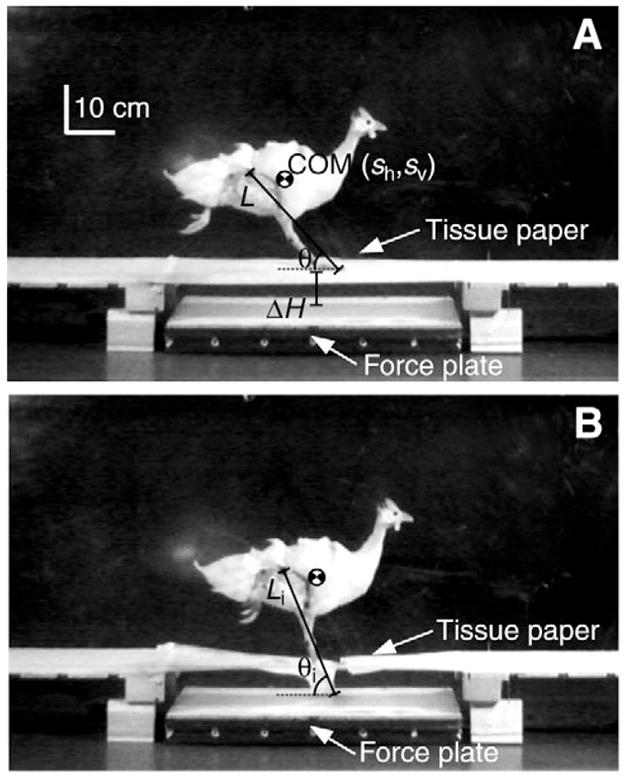Fig. 1.

Still frames of a guinea fowl during an unexpected perturbation to illustrate experimental set-up. The ground force data reported in this paper were reported previously (Daley et al., 2006), where they were used to calculate changes in mechanical energy of the body center of mass (COM). Here, the experimental data were analyzed further by adding limb kinematics and inverse dynamics to investigate joint mechanics during the perturbation. A 0.6 m long force plate was placed at the midpoint of an 8 m long runway and rested 8.5 cm below the runway surface. White tissue paper pulled tightly across the gap created the appearance of a uniform substrate. Kinematics and ground reaction forces were measured through time (moving from frame A to frame B) for the perturbed step. These data were used to (1) evaluate whole limb mechanics and (2) calculate joint moments and work using inverse dynamics, as described in Materials and methods.
